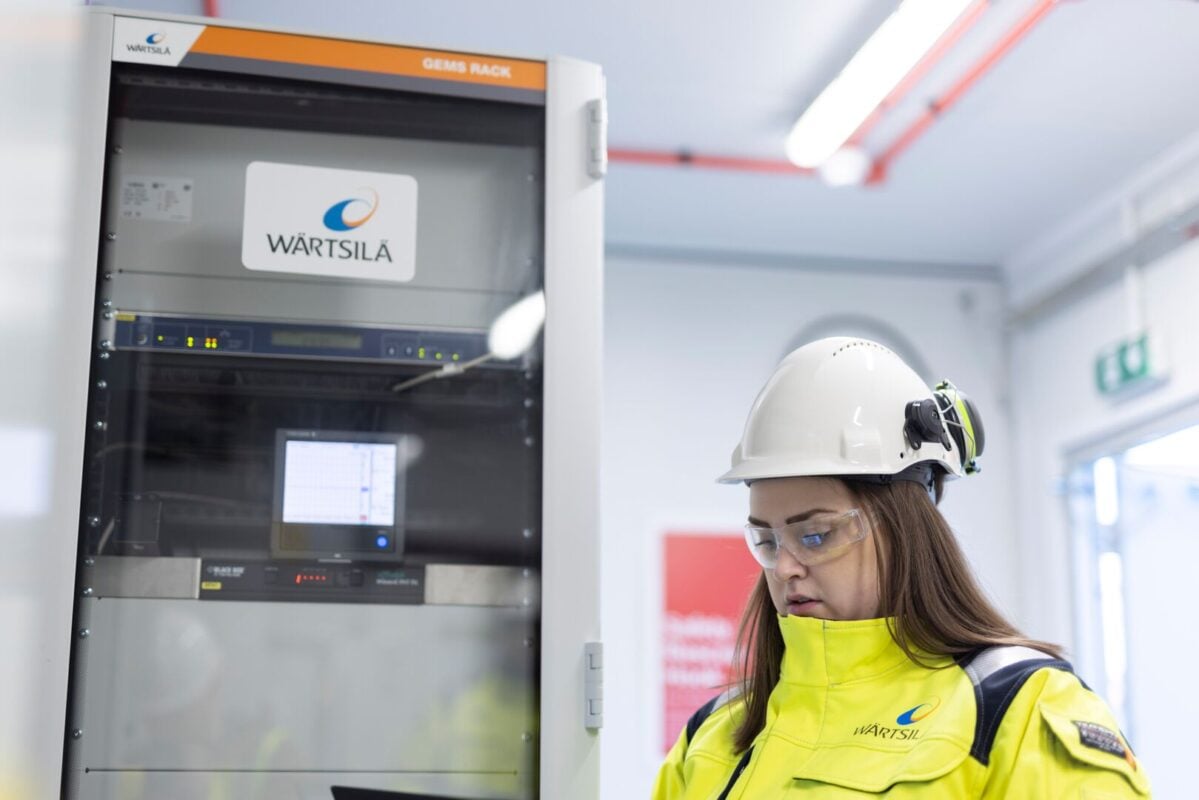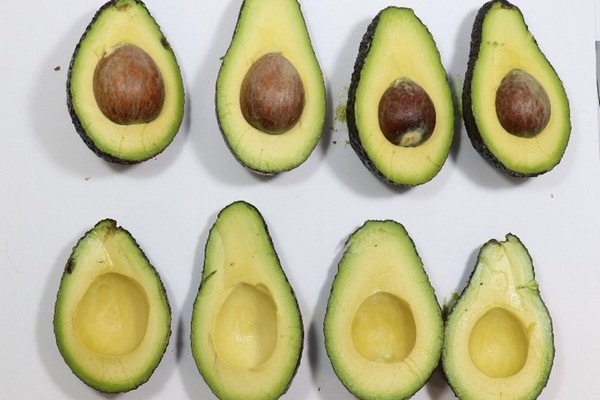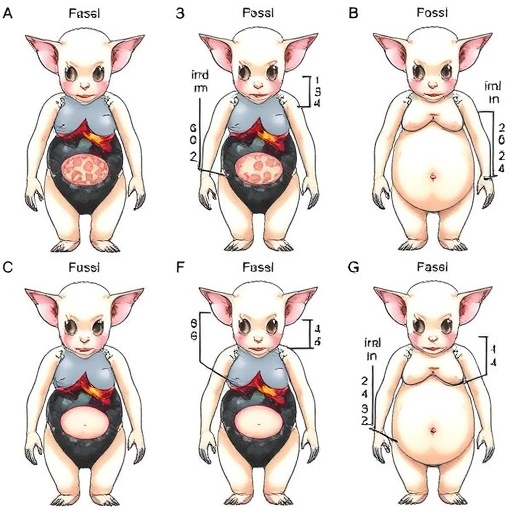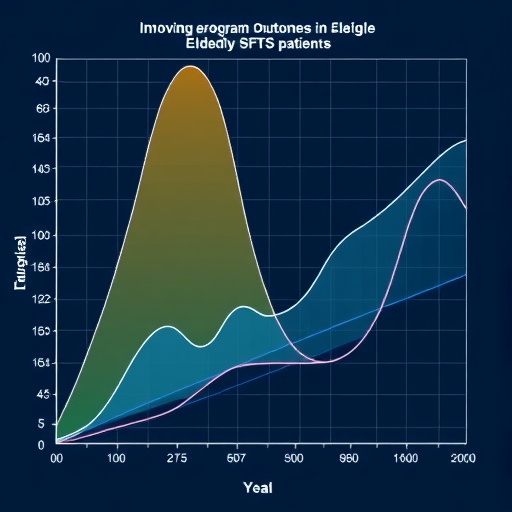Effect of enhanced early life nutrition on the M. longissimus thoracis et lumborum transcriptome of crossbred beef heifer calves – Nature


Report on the Impact of Enhanced Early Life Nutrition on Skeletal Muscle Transcriptome in Beef Heifer Calves
Abstract
Enhanced early-life nutrition in calves has the potential to improve economically important traits such as growth rate, milk yield, and reproductive development, aligning with Sustainable Development Goals (SDGs) related to responsible consumption and production (SDG 12) and zero hunger (SDG 2). This study evaluated the effects of increased dietary intake during early calf-hood on the transcriptional profile of skeletal muscle tissue in Angus × Holstein-Friesian heifer dairy-calves. Two groups were fed either a high (HI, n=10) or moderate (MOD, n=10) diet from 3 to 21 weeks of age. At 21 weeks, muscle tissue (M. longissimus thoracis et lumborum) was harvested for mRNA sequencing. Results showed differential expression of 482 genes (FDR 1.5) involved in metabolism, energy production, cellular growth, and proliferation, including enrichment of the Sirtuin signalling pathway and skeletal muscle development. These findings provide molecular insights into muscle development influenced by nutritional strategies, contributing to sustainable livestock production.
Introduction
Enhanced early life nutrition in female calves primarily targets advancing reproductive development to achieve optimal calving age, contributing to improved productivity and economic sustainability in agriculture (SDG 8: Decent Work and Economic Growth). Additionally, early nutrition impacts growth and productivity, with benefits extending to carcass composition and lactation potential, supporting SDG 2 (Zero Hunger) and SDG 12 (Responsible Consumption and Production).
Optimized pre-weaning nutrition reduces mortality and disease susceptibility, enhancing animal welfare (SDG 3: Good Health and Well-being). Despite extensive research on reproductive outcomes, the molecular effects of early nutrition on skeletal muscle development remain underexplored. This study focuses on the transcriptional changes in economically valuable skeletal muscle tissue due to enhanced early life nutrition, with implications for sustainable meat production and resource efficiency.
Methods
Animal Model and Tissue Sampling
- Subjects: Angus × Holstein-Friesian heifer calves (~2 weeks old, 51.2 ± 7.8 kg).
- Groups: High plane of nutrition (HI, n=10) and Moderate plane of nutrition (MOD, n=10), balanced by age, weight, and sire.
- Feeding Regimen:
- HI group: Milk replacer up to 10 L/day initially, gradually reduced; concentrate offered ad libitum.
- MOD group: Milk replacer at 4 L/day; concentrate offered up to 1 kg/day.
- Hay and water provided ad libitum to all calves.
- Duration: From 3 to 21 weeks of age.
- Sampling: At 21 weeks, calves euthanized; M. longissimus thoracis et lumborum muscle tissue collected and preserved for RNA analysis.
RNA Isolation and Sequencing
- RNA extracted using Qiagen RNeasy Plus Universal kit.
- Quality assessed by RNA integrity number (RIN > 8).
- Sequencing performed with Illumina Novaseq platform, 150 bp paired-end reads.
Bioinformatic Analysis
- Quality control with FastQC; adapter trimming with Cutadapt.
- Reads aligned to bovine reference genome (ARS-UCD1.2) using STAR aligner.
- Differential gene expression analyzed using edgeR with FDR |1.5|.
- Biological pathway and network analysis conducted using Ingenuity Pathway Analysis (IPA).
Results
Animal Performance
- HI calves consumed 2.5 times more dietary energy than MOD calves (P
- Growth rates: HI calves 1.18 kg/day vs. MOD calves 0.50 kg/day (P
- Body weight at 21 weeks: HI calves 189.6 kg, MOD calves 113 kg (P
RNA Sequencing and Differential Expression
- Average of 34.9 million reads per sample with 89.5% alignment to protein-coding regions.
- 11,277 genes analyzed; 482 genes differentially expressed between HI and MOD groups.
- Of these, 266 genes up-regulated and 216 down-regulated in HI calves.
Biological Pathway Analysis
- 402 differentially expressed genes mapped to biological functions and pathways.
- Significantly enriched pathways (P
- Sirtuin signalling
- AMPK signalling
- Estrogen receptor signalling
- Adipogenesis
- IGF-1 signalling
Discussion
This study demonstrates that enhanced early life nutrition significantly influences the transcriptional profile of skeletal muscle in beef heifer calves, with implications for sustainable agriculture (SDG 2, SDG 12) by improving growth efficiency and potentially reducing environmental impact.
Metabolic and Energy Pathways
- Up-regulation of genes involved in amino acid metabolism, molecular transport, and mitochondrial energy production was observed in HI calves, suggesting improved nutrient utilization.
- Sirtuin and AMPK signalling pathways, key regulators of cellular energy homeostasis and stress resistance, were enriched, indicating enhanced metabolic adaptation to increased nutrient availability.
- Down-regulation of genes involved in fatty acid oxidation suggests a shift in energy metabolism favoring efficient growth.
Cellular Growth and Proliferation
- Genes associated with cell cycle regulation and proliferation were differentially expressed, reflecting increased muscle cell growth and development.
- Satellite cells, capable of postnatal division, may contribute to observed gene expression changes, supporting muscle hypertrophy.
- Estrogen receptor signalling was affected, with evidence suggesting estrogen-independent muscle growth in HI calves.
Implications for Sustainable Development Goals
- SDG 2: Zero Hunger
- Enhanced early nutrition improves growth and productivity, contributing to food security through increased meat yield.
- SDG 3: Good Health and Well-being
- Optimized nutrition reduces disease susceptibility and mortality in calves, promoting animal health and welfare.
- SDG 8: Decent Work and Economic Growth
- Improved growth rates and productivity support economic sustainability in livestock farming.
- SDG 12: Responsible Consumption and Production
- Efficient nutrient utilization and growth during early life stages reduce resource use and environmental impact.
Conclusion
The study confirms that enhanced early life nutrition modulates gene expression in skeletal muscle, promoting metabolic activity and cellular growth processes that underpin improved muscle development. These molecular changes support sustainable livestock production by enhancing growth efficiency and potentially improving meat yield. Further research is needed to explore these effects in different sexes and to assess long-term impacts on carcass composition and production sustainability.
Data Availability
The sequencing data supporting this report are available in NCBI’s Gene Expression Omnibus under GEO ID GSE266506.
1. Sustainable Development Goals (SDGs) Addressed or Connected
- SDG 2: Zero Hunger
- The article discusses enhanced early-life nutrition in calves to improve growth rate, milk yield, and reproductive development, which aligns with SDG 2’s aim to end hunger and promote sustainable agriculture.
- SDG 12: Responsible Consumption and Production
- Optimizing nutritional strategies during early life to improve feed efficiency and production sustainability addresses responsible consumption and production.
- SDG 13: Climate Action
- Improved feed efficiency and growth in calves can reduce environmental impact of livestock production, contributing indirectly to climate action.
- SDG 3: Good Health and Well-being
- Enhanced early-life nutrition reduces mortality rate and disease susceptibility in calves, promoting animal health and well-being.
- SDG 9: Industry, Innovation and Infrastructure
- The use of RNA sequencing and bioinformatics to understand molecular mechanisms represents innovation in agricultural biotechnology.
2. Specific Targets Under Identified SDGs
- SDG 2: Zero Hunger
- Target 2.3: By 2030, double the agricultural productivity and incomes of small-scale food producers, including livestock producers.
- Target 2.4: Ensure sustainable food production systems and implement resilient agricultural practices.
- SDG 12: Responsible Consumption and Production
- Target 12.2: Achieve sustainable management and efficient use of natural resources.
- Target 12.5: Substantially reduce waste generation through prevention, reduction, recycling, and reuse.
- SDG 13: Climate Action
- Target 13.1: Strengthen resilience and adaptive capacity to climate-related hazards and natural disasters in all countries.
- SDG 3: Good Health and Well-being
- Target 3.4: Reduce mortality from non-communicable diseases and promote mental health and well-being, which can be analogously extended to animal health and welfare.
- SDG 9: Industry, Innovation and Infrastructure
- Target 9.5: Enhance scientific research, upgrade technological capabilities of industrial sectors.
3. Indicators Mentioned or Implied to Measure Progress
- Growth Rate and Body Weight of Calves
- Measured growth rates (e.g., 1.18 kg/day for high nutrition group vs. 0.50 kg/day for moderate) and body weight at 21 weeks (189.6 kg vs. 113 kg) serve as indicators of improved productivity and health.
- Feed Intake and Energy Consumption
- Dry matter intake (DMI) and metabolizable energy (ME) intake quantify nutritional efficiency and resource use.
- Gene Expression Profiles
- Differential expression of 482 genes related to metabolism, muscle development, and energy pathways measured by RNA sequencing serves as molecular indicators of nutritional impact.
- Pathway Enrichment Analysis
- Enrichment of pathways such as Sirtuin signalling, AMPK signalling, and IGF-1 signalling indicates biological processes affected by nutrition, serving as functional indicators.
- Health and Disease Susceptibility
- Though not quantitatively measured in this article, mortality rate and disease susceptibility are mentioned as important indicators for assessing health benefits of nutrition.
4. Table of SDGs, Targets, and Indicators
| SDGs | Targets | Indicators |
|---|---|---|
| SDG 2: Zero Hunger |
|
|
| SDG 12: Responsible Consumption and Production |
|
|
| SDG 13: Climate Action |
|
|
| SDG 3: Good Health and Well-being |
|
|
| SDG 9: Industry, Innovation and Infrastructure |
|
|
Source: nature.com

What is Your Reaction?
 Like
0
Like
0
 Dislike
0
Dislike
0
 Love
0
Love
0
 Funny
0
Funny
0
 Angry
0
Angry
0
 Sad
0
Sad
0
 Wow
0
Wow
0


























.png.webp?itok=oUrWXcvl#)

:focal(2620,1821)/https://media.globalcitizen.org/60/0a/600a77ce-594c-49ce-b428-dd977e3d2328/d4_csdw_thailand_2149_1.jpg?#)
















































